Animals of Egypt Aardwolf, Egyptian cobra, lappet-faced vulture, Nile crocodile, Nubian ibex, and striped hyena are some examples of Egyptian animals. Egypt, mostly covered in desert, houses animals that have adapted to this environment.
Explore below for fascinating pictures and information about these and numerous other Egyptian animals.
As per the 1998 National Strategy and Action Plan for Biodiversity Conservation by the Egyptian government, Egypt is home to a staggering 15,000 animal species, including over 10,000 insects, 515 birds, 132 mammals, 91 reptiles, and 7 amphibians.
About Egypt
The Sahara Desert Egypt, located in North Africa, occupies the northeastern-most corner of the continent, with a portion extending into Asia through the Sinai Peninsula.
The River Nile flows through Egypt, ultimately draining into the Mediterranean Sea, which borders the country to the north. To the east lies the Red Sea, separating Africa from Asia.
Egypt experiences an extremely hot and arid climate, with the Sahara Desert covering a significant portion of the country.
List of Egyptian Animals
Aardwolf
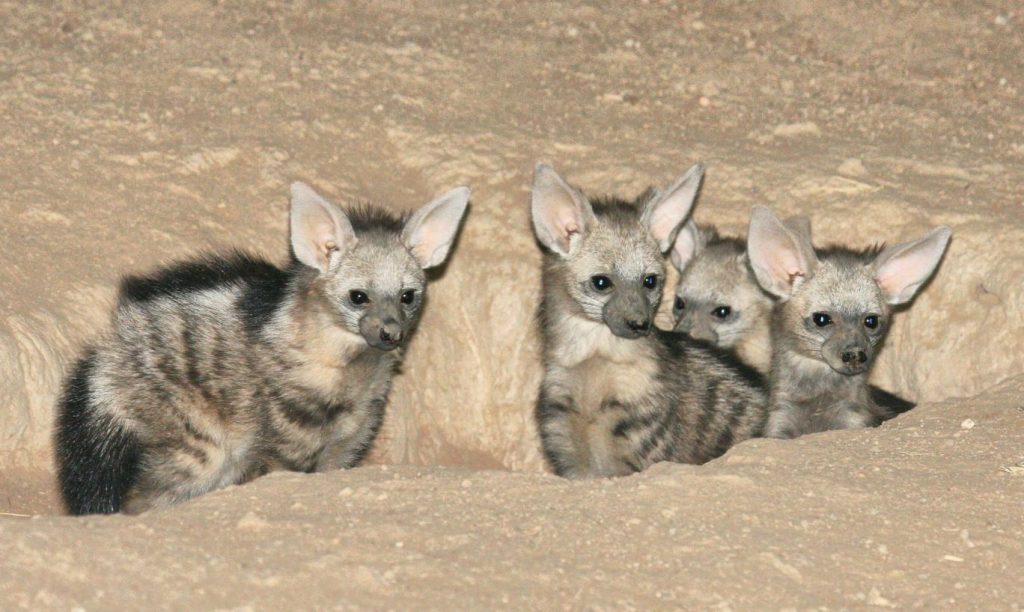
- Scientific name: Proteles cristata
- Conservation status: Least Concern
The aardwolf, a member of the hyena family, Hyaenidae, is the smallest among them. Unlike its hyena relatives, the aardwolf doesn’t feed on large animals. Instead, this nocturnal creature primarily consumes termites and other small insects, using its long and sticky tongue to gather them. In a single night, an aardwolf can consume up to 250,000 termites.
There are two main populations of aardwolves in Africa: one in the eastern region and the other in the southern region. In Egypt, aardwolves can be found in Gabal Elba, a mountainous area in the southeast.
African Wild
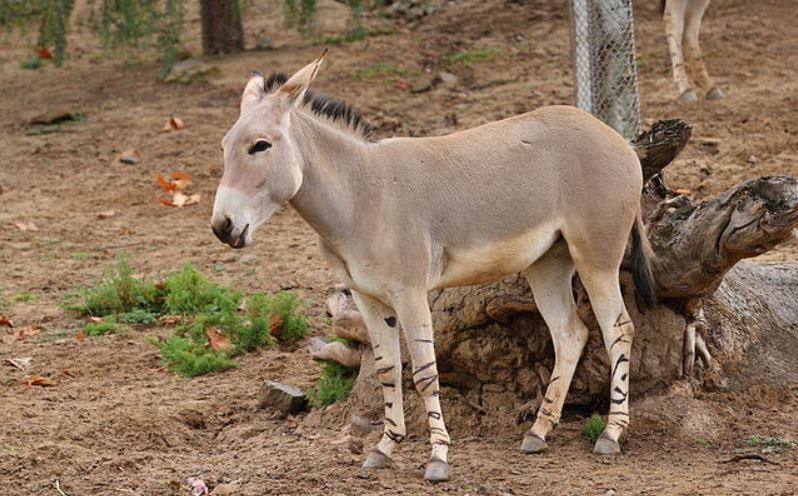
- Scientific name: Equus africanus
- Conservation status: Critically Endangered
The African wild ass, a critically endangered member of the Equidae family, is believed to be the ancestor of domestic donkeys and closely resembles them.
Two subspecies of African wild ass exist: the Somali wild ass and the Nubian wild ass. The Nubian wild ass is found in Egypt. However, with the total population estimated to be only 200 adult individuals, it is uncertain if the species still exists in Egypt.
Remaining wild asses in Egypt are likely located in the mountainous Gabal Elba region in the southeast.
Barbary Sheep / Aoudad
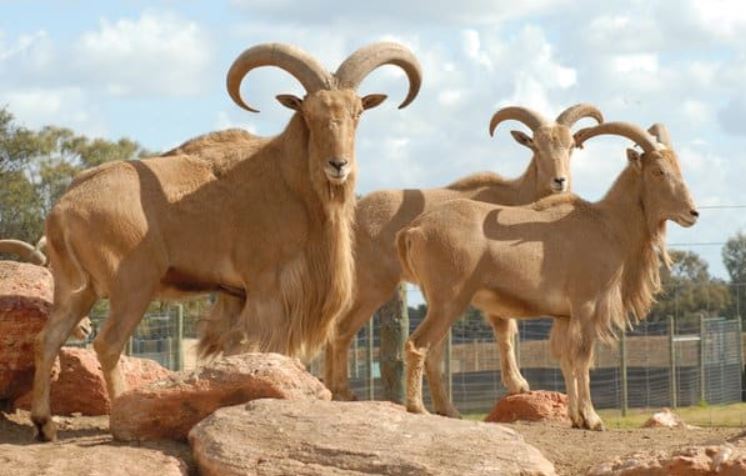
- Scientific name: Ammotragus lervia
- Conservation status: Vulnerable
The Barbary sheep, also known as aoudad, belongs to the subfamily Caprinae within the larger family Bovidae, which encompasses sheep, goats, and related animals.
Sporting a light brown coat and large, backward-curving horns, the Barbary sheep thrives in dry and rocky mountainous areas throughout North Africa. Like many other Egyptian animals, it possesses adaptations to survive in regions with limited water. It can go without drinking water for over a year, obtaining all necessary hydration from the plants it consumes.
Dorcas Gazelle
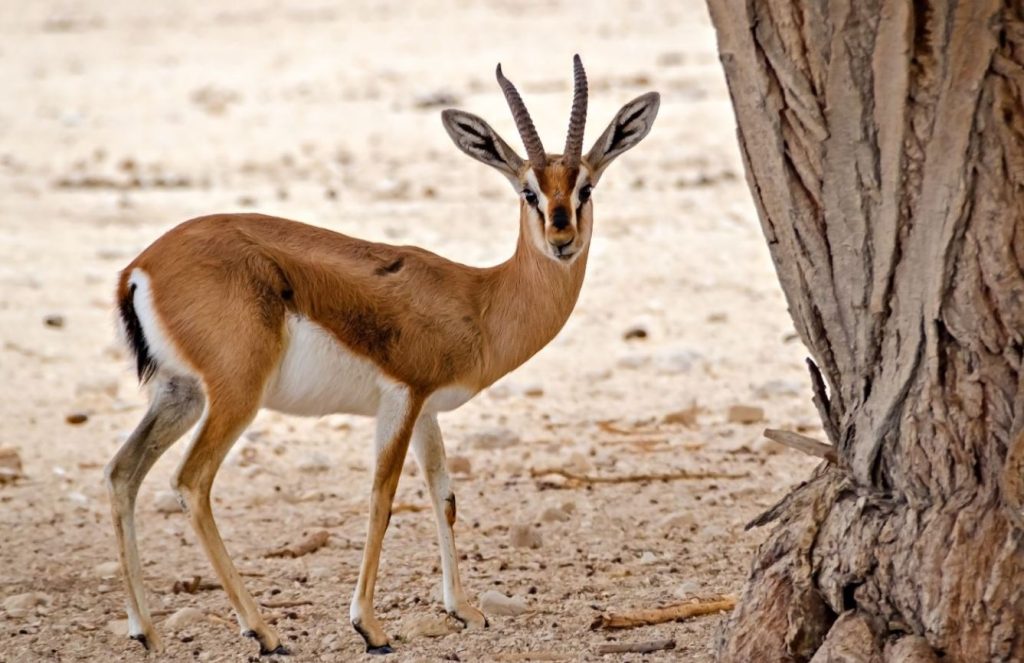
- Scientific name: Gazella dorcas
- Conservation status: Vulnerable
The dorcas gazelle belongs to the Gazella genus, known for its swift antelopes. It inhabits rocky shrublands and grasslands across various parts of North Africa. The dorcas gazelle is a desert specialist that can survive its entire life without drinking water, obtaining moisture solely from the plants it consumes and the dew it collects. To evade predators such as cheetahs, the dorcas gazelle can reach speeds of up to 60 mph (96.5 km/h).
Dromedary Camel
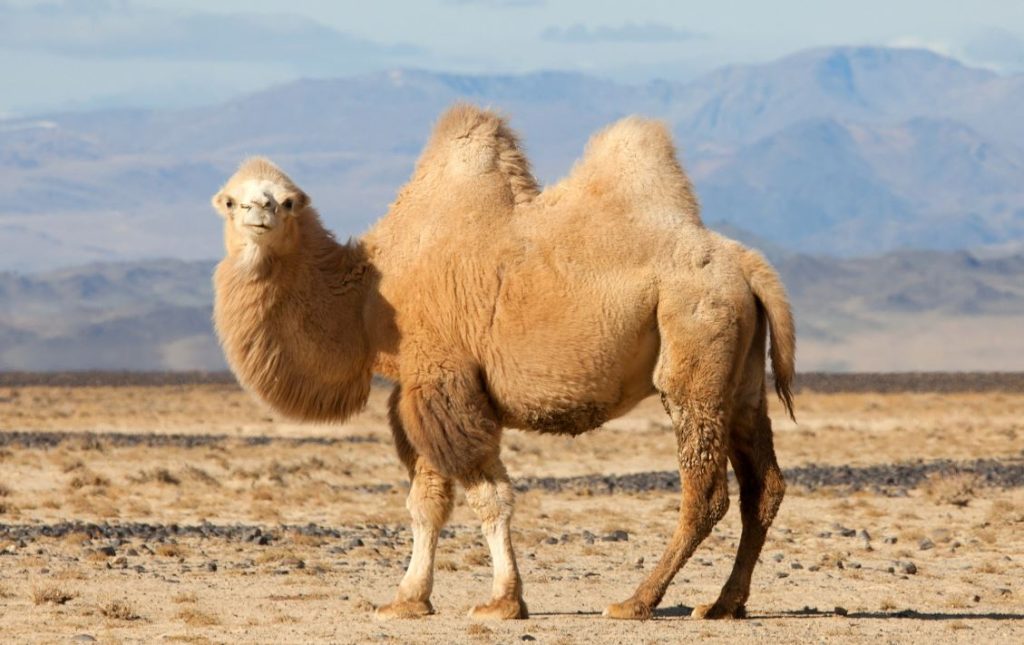
- Scientific name: Camelus dromedarius
- Conservation status: Domestic
The dromedary camel is one of the three camel species belonging to the Camelus genus, which is part of the larger camel family, Camelidae. These camels are renowned for their ability to traverse desert landscapes.
While the dromedary camel is the tallest among the three species, the Bactrian camel with two humps is heavier. The dromedary camel was first domesticated around 4,000 years ago and has been an integral mode of transportation in desert regions of Africa and the Middle East. Consequently, it has become one of the most well-known animals associated with Egypt.
Egyptian Cobra
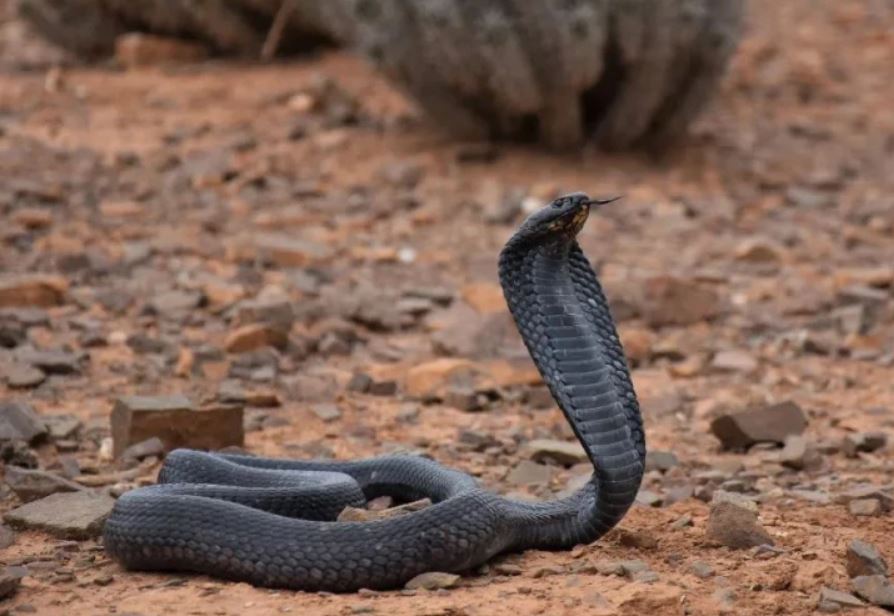
- Scientific name: Naja haje
- Conservation status: Unassessed
The Egyptian cobra is a venomous snake found in Egypt. It falls under the genus Naja, commonly referred to as “true cobras.” Cobras are part of the Elapidae family, which includes various venomous snake species.
This large snake inhabits grasslands and savannas. When threatened, the Egyptian cobra raises its upper body and spreads its neck as a display of intimidation. Unlike some other cobras, it does not spit venom; instead, it injects venom through its needle-like fangs. Its bite can be fatal to humans.
Egyptian Goose
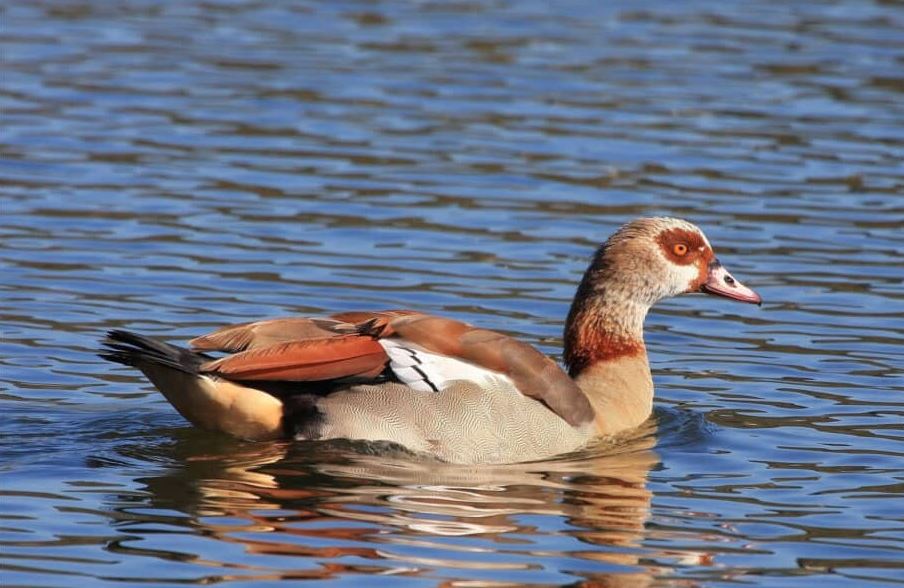
- Scientific name: Alopochen aegyptiaca
- Conservation status: Least Concern
The Egyptian goose belongs to the Anatidae family, which includes ducks, geese, and swans. Originally widespread across Africa, this species has been introduced to Europe and North America. It can be recognized by its distinct brown eye patch and white wing patches.
Egyptian geese are non-migratory and can form flocks consisting of thousands of individuals. They inhabit grasslands and wetlands, primarily feeding on land plants.
These are just a few examples of the remarkable animal diversity found in Egypt. Each species has its unique adaptations to thrive in the challenging desert environment or other specific habitats.
Egyptian Vulture
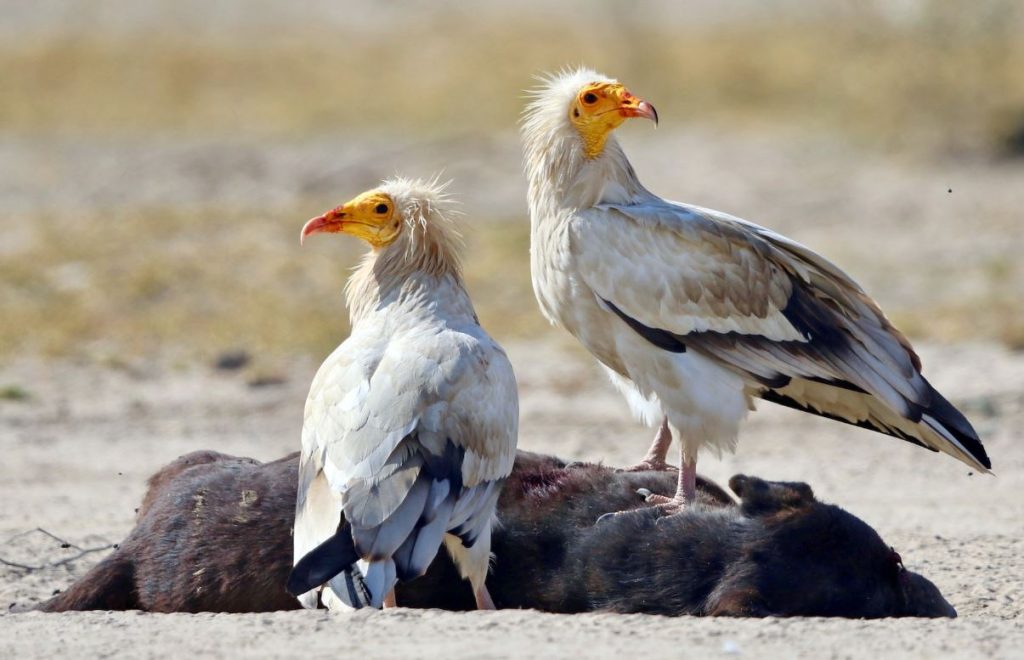
- Scientific name: Neophron percnopterus
- Conservation status: Endangered
The Egyptian vulture is a distinctive Old World vulture known for its pale plumage and yellow face. It can often be observed soaring on thermals in search of carrion, which makes up the majority of its diet.
While the Egyptian vulture can be found in Egypt, it is also distributed across various parts of Africa, southern Europe, and southern Asia. Unfortunately, the species is endangered, and its population is declining. Factors contributing to its decline include a lack of available food, collisions with wind turbines, and lead poisoning from ingesting lead shot left in the carcasses it feeds on.
Lappet-Faced Vulture / Nubian Vulture
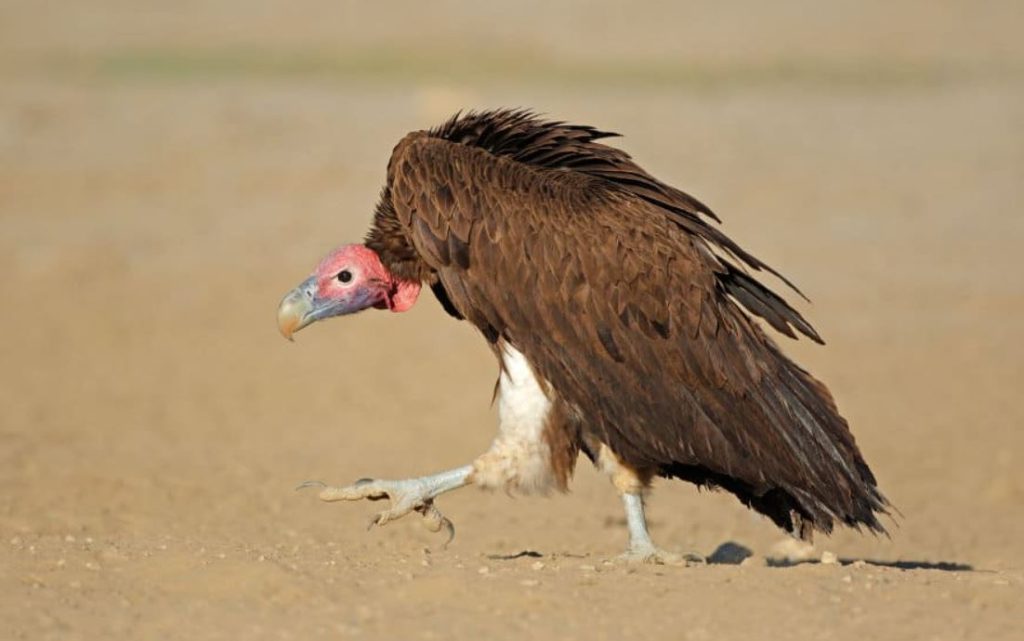
- Scientific name: Torgos tracheliotos
- Conservation status: Endangered
The lappet-faced vulture is a large bird with an impressive wingspan of up to 2.9 meters (9.5 feet). Like other vultures, it primarily scavenges on carrion, using its keen eyesight to locate food while soaring high above.
Despite its distribution across Africa, the lappet-faced vulture is classified as an endangered species, with a global population of fewer than 6,000 adult individuals. One of the major threats to its survival is poisoning from consuming animals that have been exposed to insecticides and other toxic substances.
Nile Crocodile

- Scientific name: Crocodylus niloticus
- Conservation status: Least Concern
The Nile crocodile, a large semi-aquatic reptile, is found in freshwater rivers and lakes throughout much of Africa. In Egypt, it is specifically found in Lake Nasser, a man-made reservoir formed by damming the Nile River.
As the largest crocodile species in Africa and the second largest worldwide (after the saltwater crocodile), the Nile crocodile is well-known for its size and aggression. Male Nile crocodiles can exceed lengths of 5.5 meters (18.04 feet). Due to their predatory nature, they are considered one of Africa’s most dangerous animals.
Egypt’s diverse range of animals, including these fascinating examples, highlights the rich biodiversity that thrives in various ecosystems across the country. From desert specialists to water-dwelling reptiles, each species has its own significance in Egypt’s natural heritage.
Nubian Ibex
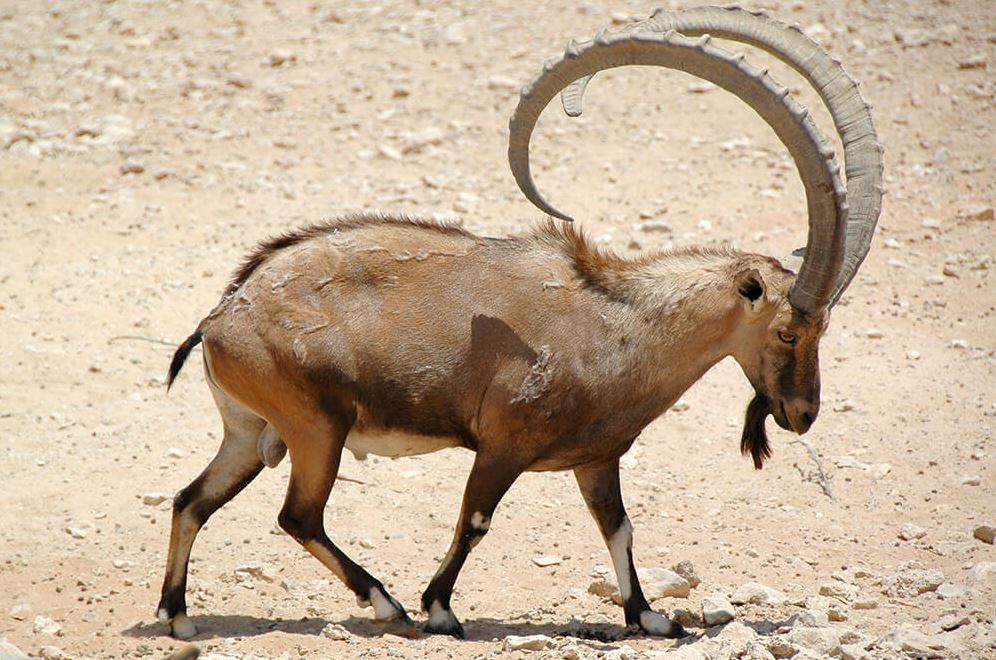
- Scientific name: Capra nubiana
- Conservation status: Vulnerable
The Nubian ibex belongs to the subfamily Caprinae, which includes sheep and goats. It is part of the larger Bovidae family, which encompasses animals like cattle and antelopes.
These remarkable creatures inhabit rocky, dry shrublands on mountains and hillsides. Females typically live in herds, while males are more solitary and join herds during the breeding season.
The Nubian ibex can be found in several locations in the Middle East, including Egypt. However, its population is small, with a maximum of 4,500 adult individuals, and it is currently decreasing mainly due to hunting activities.
Pale Gerbil

- Scientific name: Gerbillus perpallidus
- Conservation status: Least Concern
The pale gerbil is a unique species endemic to Egypt, meaning it is found exclusively in the country and nowhere else in the world. Belonging to the Gerbillus genus within the Muridae family (mouse and rat family), it shares characteristics with other gerbil species.
In the wild, the pale gerbil thrives in sandy coastal and desert habitats. It is also kept as a pet by some individuals, adding to its overall charm and appeal.
Rhim Gazelle / Rhim / Slender-Horned Gazelle
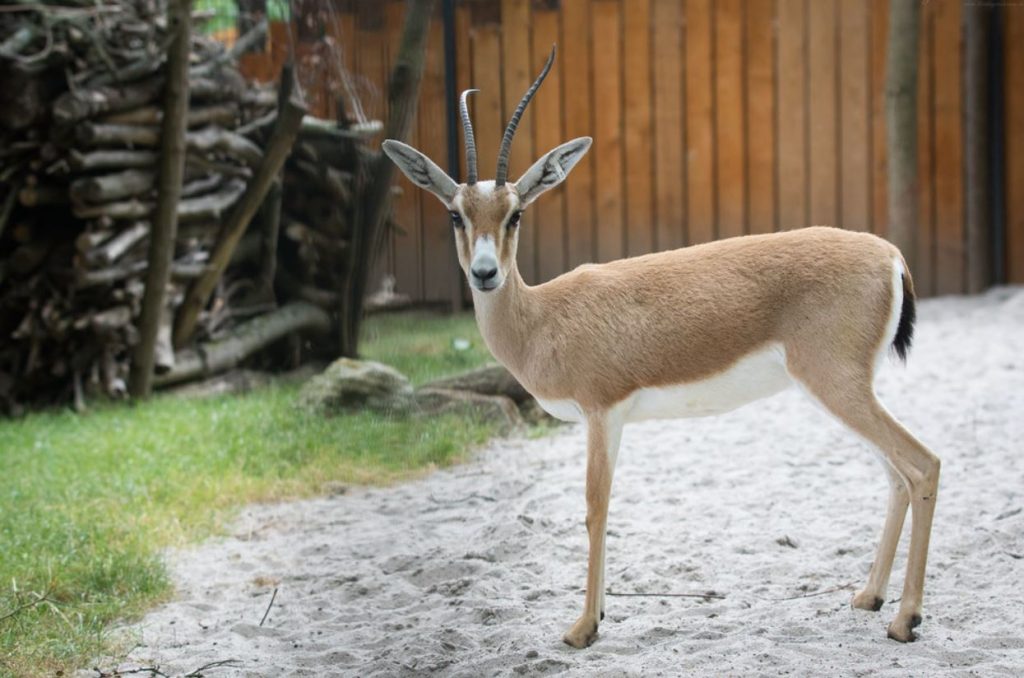
- Scientific name: Gazella leptoceros
- Conservation status: Endangered
Also known as the slender-horned gazelle or simply rhim, this species can be found in desert habitats across North Africa. It possesses the lightest-colored coat among gazelles, and its thin, ridged horns can reach lengths of up to 40 cm (15.75 inches).
As a desert specialist, the rhim gazelle relies on obtaining all the water it needs from dew and the plants it consumes. It roams through desert regions, including the Sahara Desert, in search of vegetation to sustain itself.
Rüppell’s Fox
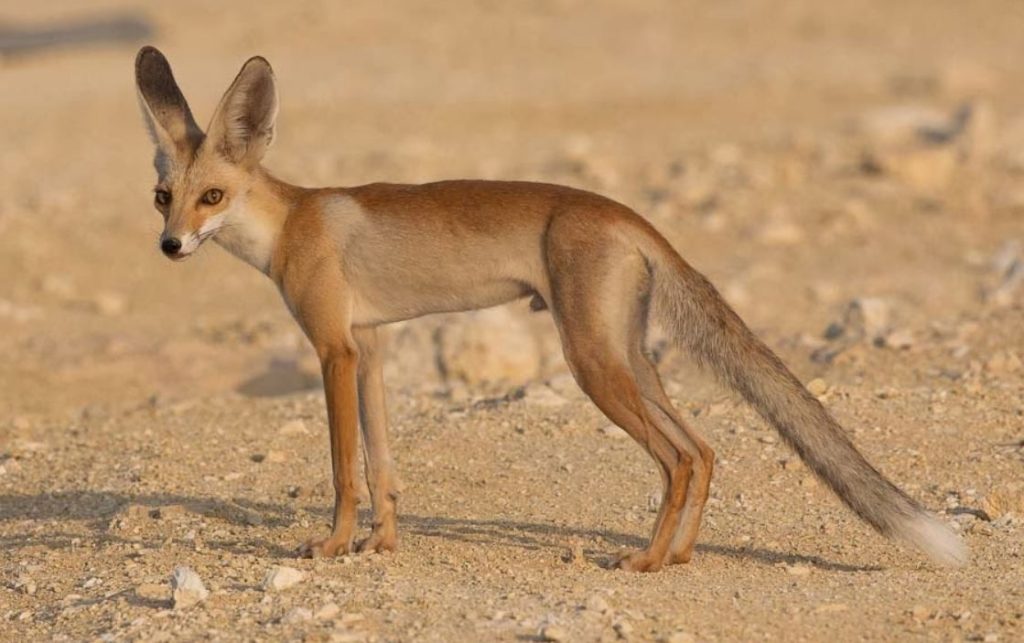
- Scientific name: Vulpes rueppellii
- Conservation status: Least Concern
Rüppell’s fox belongs to the Canidae family, which includes dogs. It can be found in desert and other arid habitats in North Africa, the Middle East, and parts of Asia. Adapted for desert life, it has large ears to regulate body temperature and hairy soles that assist with walking on hot sand.
This fox exhibits crepuscular or nocturnal behavior, active during dawn and dusk, and seeking refuge in underground dens during the hottest parts of the day. Rüppell’s fox is larger and has a darker-colored coat compared to the fennec fox, another canid species found in Egypt.
Saharan Horned Viper
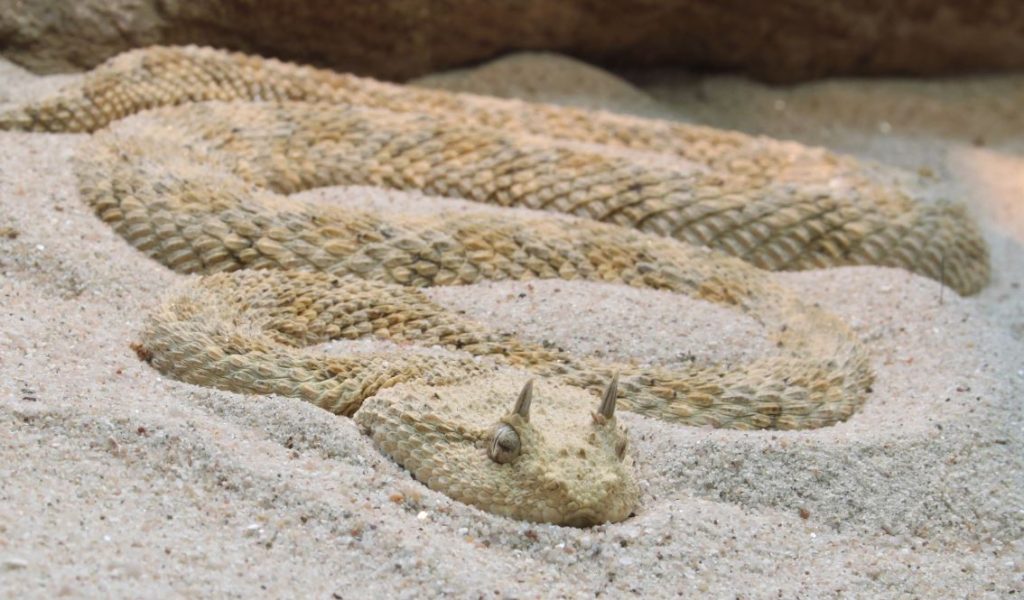
- Scientific name: Cerastes cerastes
- Conservation status: Unassessed
The Saharan horned viper is a viper species belonging to the Viperidae family. It is found in the Sahara Desert and other desert regions of northern Africa and the Middle East.
This snake species has a pale, sandy coloration, often blending with the sand of its environment. Many Saharan horned vipers possess distinctive horns above each eye, although not all individuals exhibit this feature.
To navigate the sandy terrain efficiently, the Saharan horned viper utilizes sidewinding locomotion, propelling itself sideways by moving its head and following with the rest of its body.
Striped Hyena
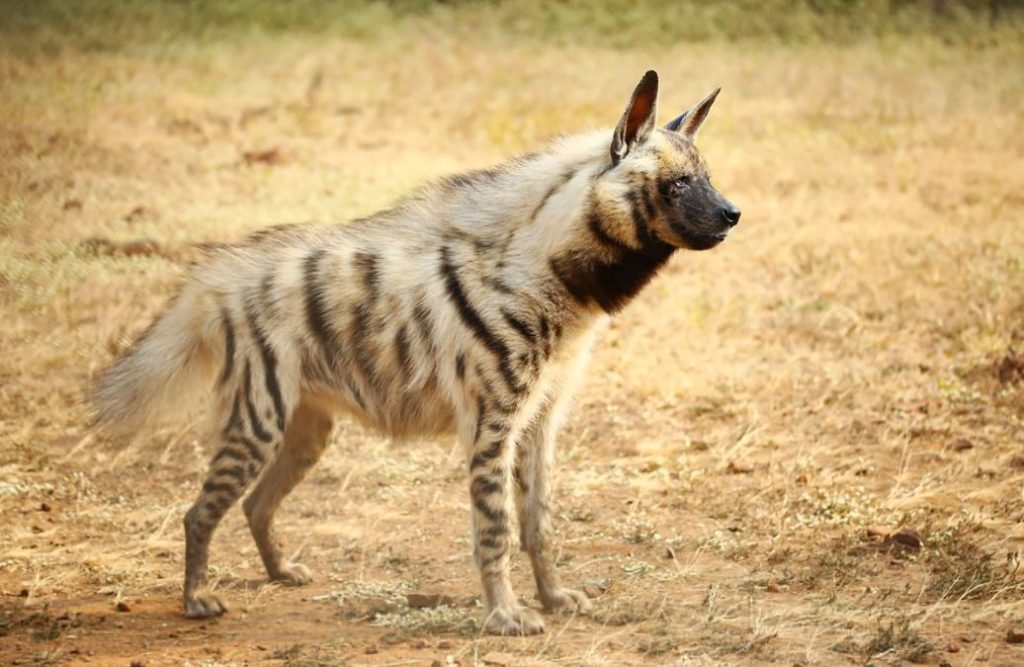
- Scientific name: Hyaena hyaena
- Conservation status: Near Threatened
The striped hyena is one of the hyena species found in Egypt, alongside the aardwolf. It is smaller than the spotted hyena but larger than the aardwolf.
As a scavenger, the striped hyena feeds primarily on carrion it finds in grasslands, savannas, and shrublands where it resides. However, it can also hunt and bring down its own prey when necessary.
The population of striped hyenas is declining, with fewer than 10,000 individuals remaining. They face various threats, including deliberate poisoning by humans who perceive them as a threat to their livestock. Superstitious beliefs also contribute to the persecution of these hyenas.
Egypt’s diverse array of animal species showcases the incredible adaptations and ecological significance of its wildlife. From endangered vultures and unique gerbils to iconic camels and awe-inspiring reptiles, each animal contributes to the intricate web of life in Egypt’s ecosystems. Preserving and protecting these species is crucial for maintaining the country’s natural heritage.
